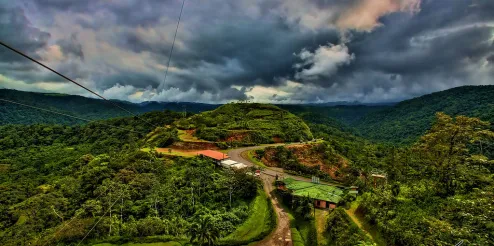Carbon credits from forest conservation have been seen as a promising tool to help mitigate climate change by reducing greenhouse gas emissions in the Global South. They offer a mechanism for companies and individuals to compensate for – or ‘offset’ – their own carbon footprint.
Carbon credits from so-called REDD+ projects – reducing emissions from deforestation and forest degradation – are issued by comparing the observed forest cover in project areas to deforestation ‘baseline’ scenarios in the absence of REDD+. The difference between the two is known as ‘additionality,’ which is covered in Article 6 of the Paris Agreement.
The voluntary purchase of REDD+ credits is intended to help conserve forests through improved monitoring and enforcement, the promotion of sustainable practices, local stakeholder engagement, and other activities. However, recent academic studies, amplified by media reports, have raised some doubts about the effectiveness of these projects, especially how many ‘additional’ emission reductions they have triggered, beyond what would have happened without the projects.
In a recent article published in the journal Science, my colleagues and I examined for the first time these forest conservation impacts in a pantropical sample. We looked at the effects of 26 REDD+ projects in six countries: Peru, Colombia, Democratic Republic of Congo, Tanzania, Zambia and Cambodia. All projects produced credits in the voluntary carbon markets, certified by the US-based private entity Verra.
We found that most projects in our sample have not significantly reduced deforestation. For those that achieved some reductions, these were substantially lower than what was claimed through their generated forest carbon credits.
Instead of making additionality forecasts at the start of the project, our impact evaluations look at past project performance. We focus on observed cuts in deforestation, compared with some pre-selected ‘control’ areas that – excluding the REDD+ intervention – have similar characteristics to those of the project areas. These control areas are monitored simultaneously to the REDD+ intervention. By comparing conservation performance, the trend difference between projects and controls can thus be attributed to REDD+ actions.
Our estimates suggest that only 5.4 million (6.1 percent) of the 89 million expected carbon credits from the REDD+ projects in the study would likely be associated with additional carbon emission reductions. Yet, many project-based credits have already been used by carbon buyers trying to offset their carbon emissions.
The discrepancy between claimed credits and confirmed impact is mainly due to exaggerated forecasts of emissions avoided from the ‘business-as-usual’ baseline scenarios these projects had adopted, according to our study. These predictions are being extrapolated from local historical deforestation trends, with typically great flexibility to choose between substantially differing baselines. This ‘rubber band’ of upfront baselines easily inflates into ‘hot air,’ meaning carbon credits that are not for real. In addition, baselines may become unrealistic over time when economic or political conditions change substantially – because it is hard to predict the future.
Also, many REDD+ projects have chosen to act in forest areas that, from the outset, were ‘high and far’ – meaning located far from roads, markets, people, and real deforestation threats. ‘High-and-far’ areas were low-hanging fruit for forest conservation. But when we compared forest conservation there with similar control areas, the differences were typically negligible: the alleged protection effort could not be substantiated by improved performance.




